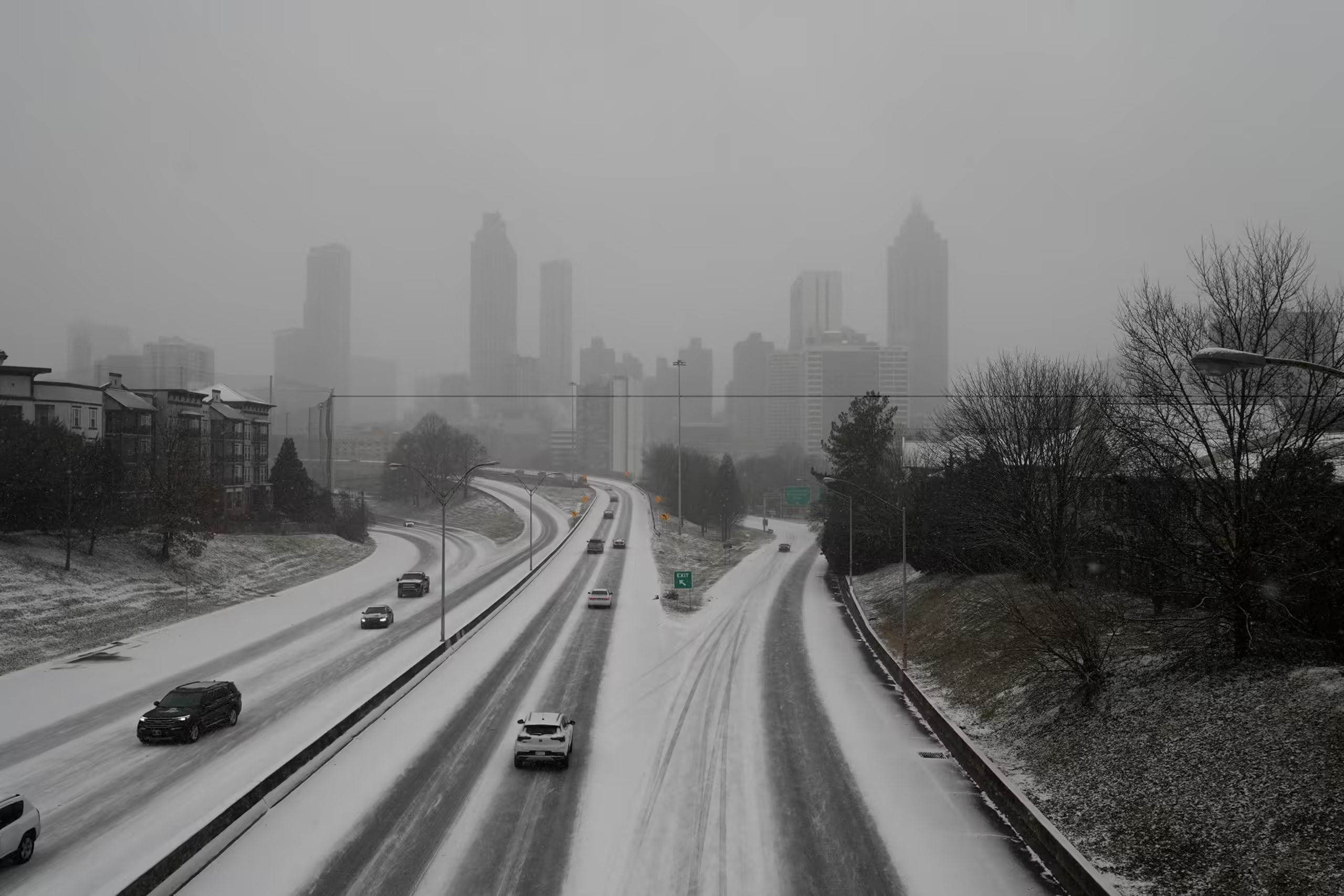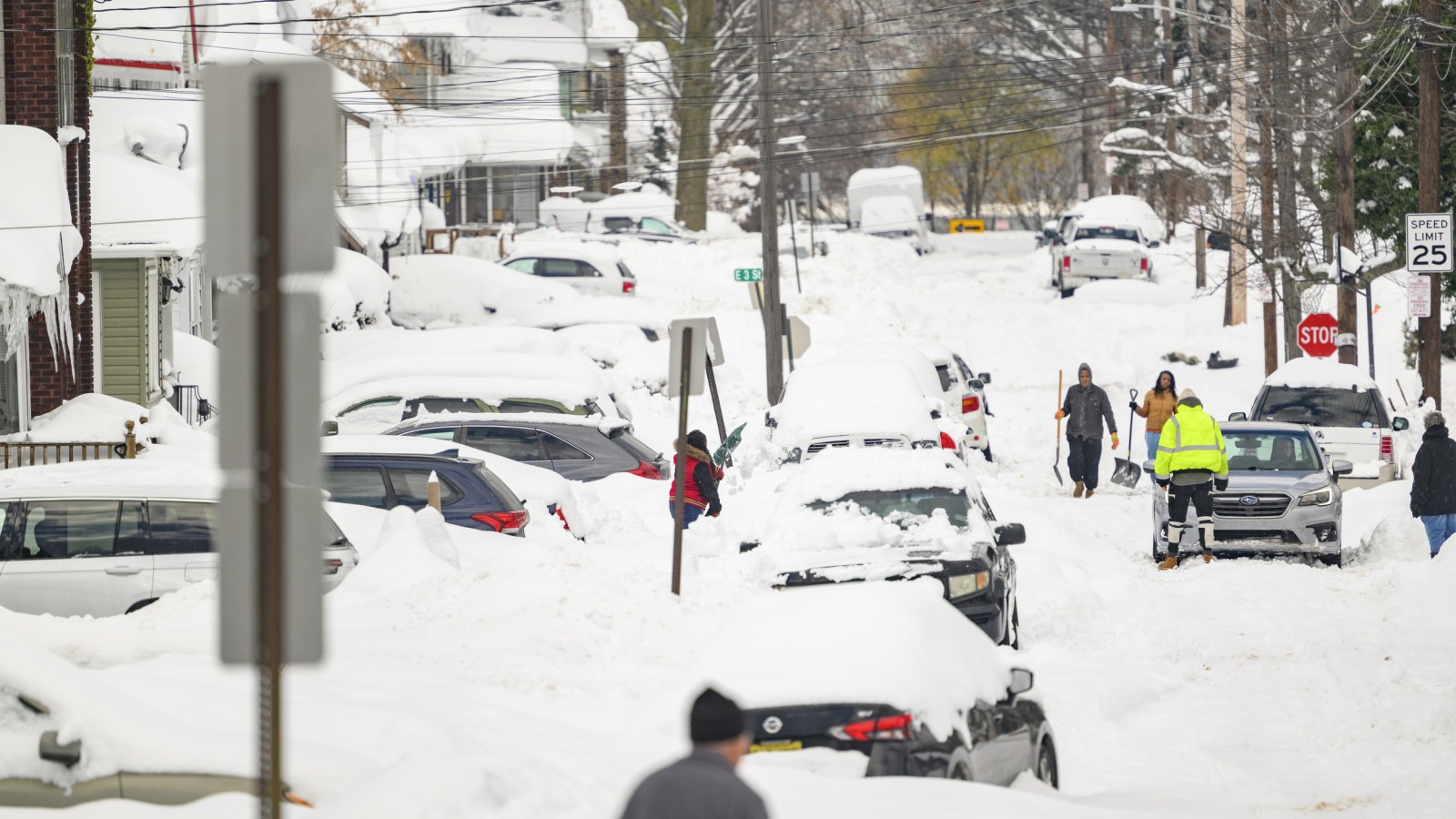In an unprecedented turn of events, a rare and powerful snowstorm has slammed the southern United States, causing widespread devastation, transportation chaos, and, tragically, loss of life. At least 10 people have been confirmed dead, and the region has experienced snow accumulation levels not seen in decades. While the southern U.S. is not typically known for heavy snowstorms, this storm has been a stark reminder of how extreme weather events can impact regions unaccustomed to such conditions. In this article, we explore the details of the snowstorm, the devastation it caused, and how it has disrupted daily life in one of the most unexpected ways.
The Storm’s Unprecedented Reach
A major snowstorm hit the South with a force that has taken both meteorologists and residents by surprise. Areas that typically experience mild winters, such as Texas, Louisiana, and Mississippi, have been blanketed in several inches of snow, a phenomenon rarely seen in these parts of the country. The storm formed in the early days of the week and quickly intensified, moving across the Gulf Coast and into parts of the Deep South.
The storm is being described as a record-breaker, with snow accumulation in places like Dallas and New Orleans exceeding historical averages. In cities where residents might only see a few flurries every few years, several inches of snow have caused widespread disruptions. The snowstorm also brought with it freezing rain and sleet, further complicating the situation and creating hazardous road conditions.
Impact on Transportation and Infrastructure
The sheer intensity of the snowstorm caught many off guard, and the local infrastructure in the affected areas has been struggling to cope with the sudden onslaught of winter weather. Snowplows and salt trucks, which are typically not part of the Southern U.S. winter weather arsenal, were unable to keep up with the rapid accumulation of snow, leading to treacherous roads and streets.
Air travel was heavily disrupted, with hundreds of flights canceled or delayed across major airports in Texas, Louisiana, and Alabama. Roads became impassable in many areas, and several major highways were shut down due to dangerous conditions. For many, the decision to stay off the roads was the only safe choice. Emergency services were stretched thin as they tried to respond to accidents, stranded drivers, and other emergencies, making the storm’s effects even more severe.
Casualties and Loss of Life
At least 10 deaths have been confirmed as a result of the snowstorm. The fatalities have primarily been linked to car accidents caused by icy roads and low visibility due to the heavy snowfall. Many drivers, unfamiliar with driving in such conditions, found themselves in dangerous situations as they attempted to navigate through snow-covered highways and streets.
Local authorities have urged residents to stay indoors and avoid unnecessary travel, but many found themselves caught in accidents despite their best efforts to avoid the storm’s worst. In addition to the deaths caused by car crashes, the storm also contributed to several fatalities due to exposure to the cold. The freezing temperatures made it difficult for people to survive without heat, leading to tragic outcomes in some cases.
As rescue teams continue to recover bodies from wrecks and stranded vehicles, the number of casualties could rise. The full extent of the storm’s impact is still being assessed, but it is clear that the aftermath will be felt for weeks to come, particularly in areas that were not prepared for such an extreme weather event.
A Snowstorm Like No Other
While snowstorms are not uncommon in the northern parts of the U.S., the South is not typically accustomed to these extreme weather events. Historically, snow and ice storms have been rare in cities like Houston, New Orleans, and Atlanta. This has led to a lack of preparedness for winter weather, leaving many residents without the necessary tools and resources to handle the conditions.
In Dallas, Texas, where the average snowfall for the entire winter season is around 1-2 inches, the storm dropped up to 6 inches of snow in some areas. The snowstorm brought heavy, wet snow, which weighed down trees and power lines, causing widespread power outages. Thousands of homes and businesses were left without electricity, adding to the suffering caused by the storm.
Local officials in affected cities have been working around the clock to clear roads, restore power, and ensure that emergency services are able to respond to the needs of residents. However, with the severity of the storm, resources have been stretched thin, and recovery efforts will take time.
Effects on the Economy and Daily Life
The snowstorm has had a profound impact on daily life in the Southern U.S., affecting everything from the local economy to basic services. Businesses across the region were forced to close as employees were unable to get to work, and stores ran out of essential supplies like food, water, and blankets. With many residents unable to travel, some local economies are already feeling the effects of the storm’s disruption.
Schools were also closed for several days as districts in the affected areas struggled to keep roads safe for students. The snowstorm has forced many families to adjust their routines, while businesses have been forced to reevaluate their operations and adapt to the ongoing challenges posed by the storm.
For local governments, the snowstorm’s toll will likely be felt in the coming weeks as they begin to assess the damage. Repairing damaged infrastructure, clearing debris, and ensuring that the public can access essential services will take time, and the costs associated with these efforts will add up. The storm has left many wondering how local governments will adapt to the reality of an increasing number of extreme weather events.
The Future of Extreme Weather Events
This rare snowstorm in the South serves as a reminder of the unpredictable nature of climate change and the increasing frequency of extreme weather events. While the storm itself may have been an isolated incident, scientists and meteorologists continue to study the impacts of global warming on weather patterns. As climate change continues to affect the planet, we may see more severe storms, floods, and droughts in regions unaccustomed to such conditions.
In particular, the Southern U.S. is expected to face more extreme weather events in the future, which will likely affect communities and economies in ways that are hard to predict. Local governments and infrastructure will need to adjust to this new reality by investing in better weather preparation, emergency response systems, and public education on how to handle severe weather events. For individuals, this means being prepared for the unexpected and recognizing that extreme weather can strike anywhere at any time.
Conclusion: A Wake-Up Call for the South
As the region begins to recover from the shock of this historic snowstorm, the reality of how unprepared many Southern states were for such an event is becoming clear. The storm has brought tragedy, but it also serves as a wake-up call for future preparedness. As more extreme weather events become the norm, residents and local governments must adapt to protect lives and minimize damage.
The death toll is a somber reminder of the dangers that can arise when unexpected weather strikes. It also underscores the importance of understanding the broader impacts of climate change, which may bring more extreme weather events to regions previously insulated from such conditions. In the face of these challenges, communities must come together to ensure the safety and well-being of all residents as they navigate the uncertain future of extreme weather.




